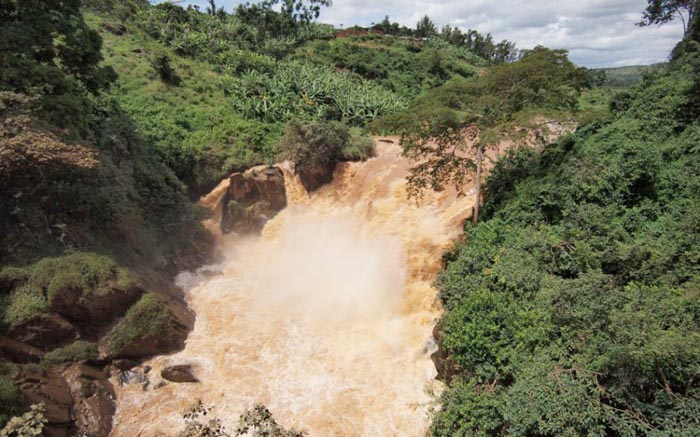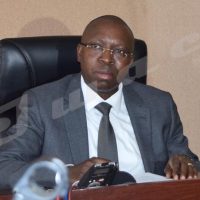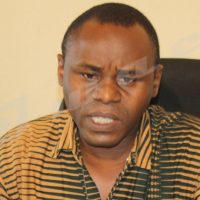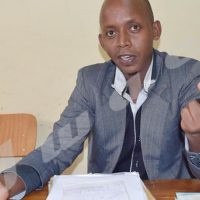The Ministers of Energy from Burundi, Rwanda and Tanzania held a meeting in Bujumbura on 10th September to discuss the implementation of the hydroelectric power development project. The Project of building a modern hydroelectric power plant, that will generate 8 megawatt for the three countries, will start in 2015. The dam is expected to start functioning on 31st December 2018.-By Lorraine Josiane Manishatse
The objective of the Regional Rusumo Falls Hydroelectric Project is to increase power supply of electricity to the national grids of Burundi, Rwanda, and Tanzania. “The Hydroelectric power development project will generate 80 megawatt of power that will be shared equally among the three countries”, says Nolasque Ndayihaye the Director General of Energy in Burundi.
He indicates that the idea for the project was born in 1974. Only in 2013 did the World Bank accept to fund it. “The World Bank has given the first tranche of financing of US$9 million, for the preparation of the project that has started with the support of the Nile Basin Initiative”, Ndayihaye points out.
At the launch of the project, Colin Bruce, Director, Strategy, Operations and Regional Integration of the World Bank said that by connecting grids, the project will help to catalyze growth and to encourage peace and stability in the sub-region. “This landmark project will have transformational impact, bringing lower-cost energy to homes, businesses, and clinics in Burundi, Rwanda and Tanzania.”
Lack of access to electricity severely hampers economic competitiveness and slows down the region’s development. Only an estimated four percent of the population in Burundi has access to electricity, with numbers for Rwanda and Tanzania at 13 and 15 percent respectively.
Libérat Mpfumukeko, the Managing Director of Regideso in Burundi, indicated last week that there is now a constant deficit of electric current in the rainy as well as dry season. At present, the national grid in Burundi has 21 megawatts available, while the demand is at least 40. “We have to wait for about four or five years to redress the balance between supply and demand”, Mpfumukeko deplores.
According to Ndayihaye, the Director General of Energy in Burundi, they have already obtained the necessary budget for the execution of the project. “We have signed a funding agreement with the World Bank and Banque Africaine de Développement (African Bank of Development). The World Bank has given US$ 340 million for the construction of the Power Station and BAD US $ 130 million for the construction of stations and transmission lines in the three countries.”
“On the 11th of July, the World Bank has transmitted a letter to the Government of Burundi, to signify that Burundi has fulfilled all the required conditions. They’ll return to Burundi to proceed with the 1st disbursement of funds for the effective implementation of the project”, he explains.
Burundi, Rwanda and Tanzania will all benefit from employment opportunities created by the construction, installation and operation of the new power plant. Ndayihaye clarifies that the Project Executive Committee is already recruiting staff.
“There is a project engineering consultant who is implementing a paper, outlining recruitment procedures of the company that will build the Power Station. We expect that in March 2015 the executing company will be implemented. The construction must start in 2015 and the dam will be functional on 31th December 2018”, he concludes. Rusumo Fallls is located on the Kagera River on the border between Rwanda and Tanzania. From there, transmission lines will run to stations in Gitega in Burundi to Kigali in Rwanda and to Nyakanazi in Tanzania, covering an overall distance of 371 kilometers.
——————————————————————————————————————————————
Hydropower Development in Burundi
To meet future demand for electricity in Burundi, several projects are underway, ranging in stages from planning to implementation.
• The Jiji and Mulembwe hydropower project was approved in April this year and consists of two hydropower stations with a combined capacity of 48 megawatts.
• Rehabilitation of the Ruzizi I & II hydropower plants, situated at the border of the DRC, Rwanda and Burundi. Ruzizi I is expected to generate an extra 7.6 megawatts and Ruzizi II will expand with 7.8 megawatts. The project is expected to start late 2015/early 2016.
The demand for electricity is expected to grow from 46 megawatts in 2012, to 92 megawatts by 2018, reaching a high of 192 megawatts by 2025.
Source: World Bank



















 IWACU Open Data
IWACU Open Data

